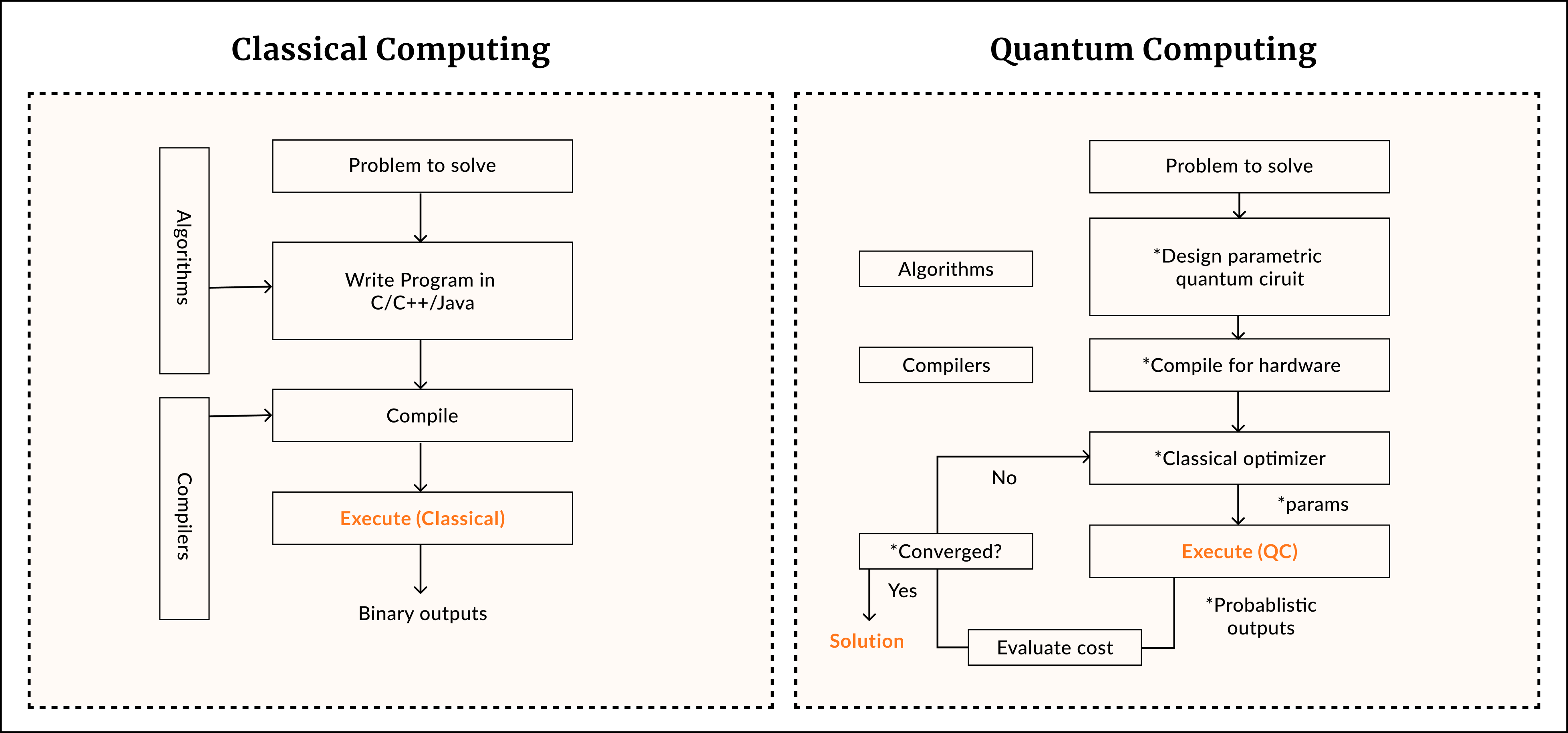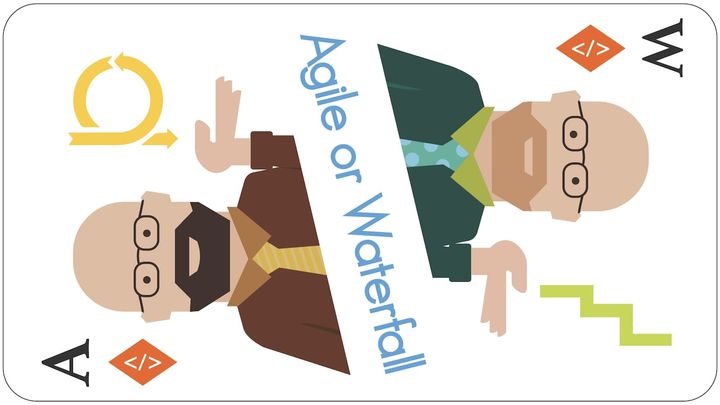
Jump To Section
- 1 Classical vs. Quantum Computing: Understanding the Paradigm Shift
- 2 The Impact on Application Architecture: Classical vs. Quantum
- 3 Best Applications of Quantum Computing: Where It Will Have the Biggest Impact
- 4 Preparing for the Quantum Era
- 5 Timeline & Challenges: The Road Ahead
- 6 Final Takeaway: The Quantum Opportunity
As technology accelerates at an unprecedented pace, artificial intelligence (AI) and machine learning (ML) continue to dominate boardroom discussions. While these technologies are powerful, they represent only part of the future. A far more disruptive force is emerging: quantum computing.
Once a concept confined to academic research and science fiction, quantum computing is becoming a reality. While most organizations focus on optimizing existing AI models, quantum computing is set to revolutionize industries by solving complex problems that today’s most powerful supercomputers cannot handle.
In this article, we’ll break down the fundamental differences between classical and quantum computing, how they shape application architecture, and what organizations can do to prepare for this inevitable quantum leap.
Classical vs. Quantum Computing: Understanding the Paradigm Shift


The new paradigm of quantum computing promises to revolutionize how we think about software architecture, moving beyond the limits of classical computing.
By gaining knowledge about this emerging technology, businesses can position themselves for first-mover advantages in optimization, cybersecurity, and predictive analytics.
To understand why quantum computing is such a game-changer, let’s look at how it differs from classical computing.
Classical Computing: The Foundation of Today’s Modern Technology
- Bits as Building Blocks:
Classical computers use bits, represented as 0s and 1s. Each bit can either be in the state 0 or 1 at any given time. - Deterministic Operations:
Operations in classical computers follow a linear and predictable sequence of steps, akin to flipping a light switch on or off. - Scalability Limits:
Classical computers struggle with tasks involving vast amounts of data or computations that grow exponentially, such as simulating molecular interactions or optimizing complex systems. - Hardware Architecture:
Classical computers use transistors and electronic circuits operating at room temperature.
Quantum Computing: The Future of Exponential Computation
- Qubits as Building Blocks:
Quantum computers use quantum bits or “qubits,” which can exist in multiple states simultaneously (superposition). Think of it like a spinning coin that’s simultaneously in both states until observed. - Entanglement and Interference:
Qubits can become entangled, meaning the state of one qubit is directly related to another. This property, combined with quantum interference, allows quantum computers to solve problems in fundamentally different ways. - Exponential Power:
Quantum computers excel at parallelism, solving problems that are practically impossible for classical computers, such as breaking encryption algorithms or optimizing logistics networks. - Hardware Requirements:
Quantum computers require extreme cooling (near absolute zero) and specialized materials like superconducting circuits or trapped ions. They also depend on complex error correction systems to manage the fragile quantum states.
The Impact on Application Architecture: Classical vs. Quantum

The differences between classical and quantum computing extend to how applications are designed and executed.
Classical Application Architecture
- Linear Processing:
Applications are built on deterministic processes with well-defined inputs and outputs. - Layered Frameworks:
Most software is organized into layers (presentation, business logic, data), optimized for sequential processing. - Resource Dependence:
Scalability relies on adding more processors or memory, often leading to diminishing returns.
Quantum Application Architecture
- Probabilistic Processing:
Quantum applications leverage probabilistic algorithms, requiring new ways of thinking about problem-solving. - Optimization-Driven Design:
Applications focus on solving problems that benefit from quantum speedups, such as cryptography, material science, and AI. - Hybrid Models:
Practical quantum solutions use a combination of classical and quantum computing. Classical computers handle user interfaces and data preparation, while quantum systems tackle specific complex calculations. Frameworks like Qiskit, Cirq, and Q# facilitate this integration.
Best Applications of Quantum Computing: Where It Will Have the Biggest Impact
Quantum computing isn’t a one-size-fits-all solution—it excels in solving specific high-impact challenges:
- Optimization Problems
Transforming industries like logistics, finance, and supply chain management by evaluating millions of variables simultaneously. - Molecular Simulation & Drug Discovery
Enabling faster development of new medicines by accurately modeling molecular interactions. - Cybersecurity & Cryptography
Quantum computing poses both a risk and a solution—breaking existing encryption methods while also introducing quantum-secure cryptographic techniques. - Quantum Machine Learning
Accelerating AI advancements, pattern recognition, and predictive analytics.
Preparing for the Quantum Era
For business leaders, the question isn’t if quantum computing will become mainstream—it’s when. Companies that begin preparing today will secure a significant competitive advantage.
Actionable Steps for Enterprises:
- Educate and Train Teams:
Invest in upskilling employees on quantum concepts, programming languages, and frameworks. - Explore Use Cases:
Identify areas in your industry where quantum computing can provide a competitive edge, such as optimization or machine learning. - Adopt Hybrid Models:
Experiment with quantum-inspired algorithms that run on classical systems while preparing for quantum hardware. - Collaborate with Ecosystems:
Partner with quantum computing providers, academic institutions, and consortia to access resources and expertise. - Monitor Progress:
Stay updated on advancements in quantum hardware and software to time your transition effectively.
Timeline & Challenges: The Road Ahead
The mainstream adoption of quantum computing is expected within the next 5-10 years, with early adopters in finance, healthcare, and logistics already exploring real-world applications.
Key Challenges to Overcome:
Hardware Maturity:
Quantum computers are still in their infancy, with limited qubits and error rates.
Skill Gap:
There’s a shortage of quantum-literate professionals.
Cost and Accessibility:
Quantum hardware is expensive and not widely accessible yet.
Integration Issues:
Building systems that combine classical and quantum architectures is complex.
Final Takeaway: The Quantum Opportunity
Quantum computing represents more than just a technological leap — it’s an opportunity for visionary leaders to gain an edge in an increasingly complex digital landscape. By understanding its principles, reimagining application architectures, and taking proactive steps, organizations that act now can position themselves at the forefront of innovation, solving problems that were once considered unsolvable.
The journey may be challenging, but the rewards—from solving unsolvable problems to achieving unparalleled efficiencies—make it worth the effort.
This article is written in collaboration with Hussain Qureshi, President at mobileLIVE.



